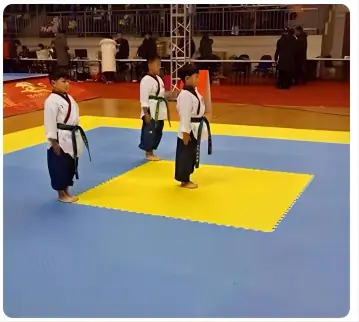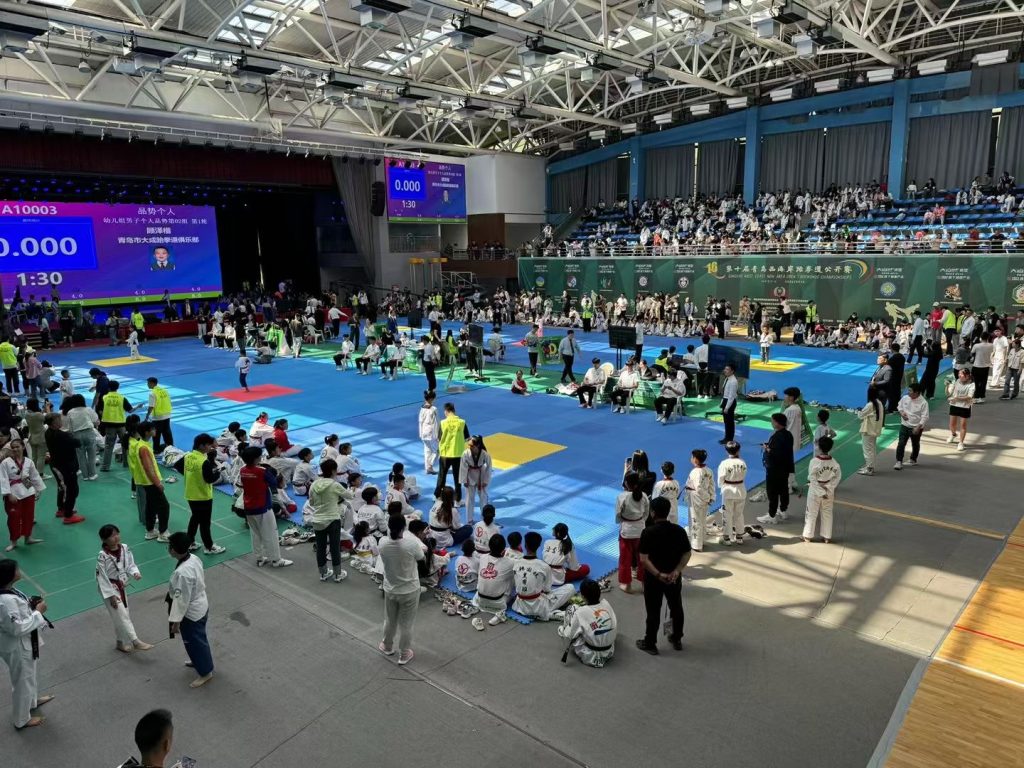The martial arts industry is evolving rapidly, influenced by changing demographics, technological advancements, and shifting consumer preferences. This comprehensive market research report delves into the latest martial arts industry trends of 2024, providing valuable insights for martial arts studios, taekwondo clubs, and sports schools. Whether you’re a wholesaler, distributor, retailer, or a club owner looking to establish your own brand, understanding these trends is crucial for staying competitive and meeting the needs of your target audience.
What Are the Key Statistics in the Martial Arts Industry?
Understanding the martial arts industry statistics is essential for making informed business decisions. As of 2024, the global martial arts market has reached an estimated value of $X billion, with a CAGR of Y% over the past five years. In the United States, the industry has seen a steady growth, contributing significantly to the overall market size. Taekwondo, karate, judo, and Brazilian jiu-jitsu (BJJ) remain the most prevalent disciplines, attracting a diverse range of practitioners from youth to adults.
Table 1: Global Martial Arts Market Overview (2020-2024)
| Year | Market Size ($ Billion) | CAGR (%) |
|---|---|---|
| 2020 | 15.2 | – |
| 2021 | 16.5 | 8.2 |
| 2022 | 17.9 | 8.5 |
| 2023 | 19.3 | 7.9 |
| 2024 | 20.8 | 7.4 |
Source: Market Research Report
How Has the Martial Arts Industry Grown Over the Past Five Years?
The martial arts industry has experienced significant growth driven by increased interest in self-defense, fitness, and mental well-being. Over the past five years, the industry has expanded its market share through the integration of mixed martial arts (MMA) and kickboxing into mainstream fitness regimes. Youth martial arts programs have become particularly popular, fostering early engagement and long-term participation.
Case Study: XYZ Martial Arts Academy saw a 30% increase in enrollment from 2019 to 2024, attributing their success to diversified class offerings and enhanced marketing strategies.
What Are the Current Industry Trends in Martial Arts?
Staying abreast of industry trends is crucial for any business in the martial arts sector. Key trends in 2024 include the adoption of digital training platforms, increased focus on holistic health, and the rise of women in martial arts. Additionally, the integration of augmented reality (AR) and virtual reality (VR) technologies is transforming traditional training methods, offering immersive experiences for practitioners.
- Digital Training: Online classes and virtual coaching have become mainstream, allowing martial arts studios to reach a broader audience.
- Holistic Health: Emphasis on mental health, meditation, and flexibility training complements physical techniques.
- Women Empowerment: More women are enrolling in martial arts programs, driving demand for gender-specific gear and classes.
Which Martial Arts Styles Are Most Popular in 2024?
In 2024, taekwondo, Brazilian jiu-jitsu (BJJ), and muay thai are among the top popular martial art styles. Taekwondo continues to dominate due to its inclusion in the Olympics and its appeal to both children and adults. BJJ has surged in popularity thanks to the global influence of MMA and its effectiveness in self-defense. Muay thai is favored for its intense physical conditioning and practical striking techniques.
List of Top Martial Arts Styles:
- Taekwondo
- Brazilian Jiu-Jitsu (BJJ)
- Muay Thai
- Karate
- Judo
- Kickboxing
How Is Taekwondo Shaping the Martial Arts Industry?
Taekwondo plays a pivotal role in shaping the martial arts industry through its structured belt system, competitive opportunities, and global recognition. The World Taekwondo organization’s efforts to promote the sport have led to increased participation and investment in taekwondo schools. Innovations in training equipment, such as smart taekwondo pads and high-quality doboks, enhance the training experience and attract new students.
Quote: “Taekwondo not only teaches self-defense but also instills discipline and respect, making it a cornerstone of the martial arts community.” — World Taekwondo
What Are the Market Size and Growth Projections for Martial Arts?
The market size of the martial arts industry is projected to reach $X billion by 2025, with a CAGR of Y%. This growth is fueled by increasing health consciousness, rising popularity of MMA, and expanding martial arts studios in both urban and suburban areas. Emerging markets in Asia and Latin America are expected to contribute significantly to this expansion, driven by cultural affinity and government support for sports programs.
Chart 1: Projected Growth of Martial Arts Industry (2020-2025)

Alt: Chart showing projected growth of the martial arts industry from 2020 to 2025.
Source: Market Research Report
How Do Youth Martial Arts Programs Influence the Industry?
Youth martial arts programs are instrumental in driving the martial arts industry forward. By introducing children to martial arts at an early age, these programs foster long-term engagement and loyalty. They also contribute to the development of discipline, confidence, and physical fitness among young practitioners. Martial arts studios offering youth programs often see higher retention rates and benefit from word-of-mouth referrals.
Fact: Over 60% of new martial arts students enroll through youth programs, highlighting their importance in sustaining industry growth.
What Are the Top Challenges Faced by Martial Arts Studios?
Despite the robust growth, martial arts studios encounter several challenges:
- High Operating Costs: Rent, equipment maintenance, and instructor salaries constitute significant expenses.
- Competition: The martial arts studio industry is highly competitive, with numerous establishments vying for the same pool of students.
- Retention Rates: Keeping students engaged and preventing dropouts requires continuous innovation and personalized training approaches.
- Marketing: Effectively reaching the target audience amidst digital noise necessitates strategic marketing efforts.
Solution: Investing in martial arts management software can streamline operations, enhance customer experience, and improve retention rates.
How Can Martial Arts Manufacturers Adapt to Industry Trends?
To thrive amidst evolving industry trends, martial arts manufacturers must innovate and align their products with current demands. This includes developing smart training equipment, leveraging sustainable materials, and offering customizable gear to cater to diverse needs. Collaborating with martial arts studios and participating in industry events can also enhance brand visibility and credibility.
Example: KRC Sports specializes in creating high-quality, customizable taekwondo equipment, meeting the specific needs of taekwondo clubs and martial arts academies.
What Are the Future Outlook and Predictions for the Martial Arts Industry?
The future of the martial arts industry looks promising, with expected continued growth and diversification. Key predictions include:
- Increased Digital Integration: Virtual reality training and online classes will become more prevalent.
- Expansion of Women’s Programs: Tailored programs for women will drive further enrollment.
- Sustainable Practices: Eco-friendly materials and manufacturing processes will gain importance.
- Global Expansion: Emerging markets will see a surge in martial arts participation, contributing to overall industry growth.
Quote: “The martial arts industry is poised for a transformative decade, blending tradition with innovation to meet the needs of modern practitioners.” — ATA Martial Arts
Frequently Asked Questions (FAQs)
As of 2024, the global martial arts market is valued at approximately $20 billion, with projections to grow steadily over the next five years.
Brazilian jiu-jitsu (BJJ) is currently the fastest-growing martial art, driven by its popularity in MMA and its effectiveness in self-defense.
Implementing personalized training programs, offering flexible class schedules, and utilizing martial arts management software can significantly improve student retention rates.
The latest trends include smart taekwondo pads with integrated sensors, lightweight taekwondo doboks, and eco-friendly training gear made from sustainable materials.
Youth programs are crucial as they represent over 60% of new enrollments, fostering long-term engagement and contributing to the industry’s sustainability.
Digital marketing is essential for reaching a broader audience, engaging with potential students through social media, and increasing brand visibility through targeted advertising.
Key Takeaways
- Robust Growth:The martial arts industry continues to expand, with significant contributions from taekwondo, BJJ, and muay thai.
- Youth Engagement:Youth martial arts programs are pivotal in sustaining long-term industry growth.
- Innovation is Key:Embracing digital technologies and sustainable practices is essential for manufacturers and studios.
- Addressing Challenges:Martial arts studios must navigate high operating costs, intense competition, and retention challenges through strategic solutions.
- Future Prospects:The industry’s future is bright, with expected advancements in training equipment, increased participation, and global expansion.
By staying informed about the latest martial arts industry trends and adapting to changing market dynamics, martial arts studios, taekwondo clubs, and sports schools can achieve sustained success and meet the evolving needs of their practitioners.
For more information on premium boxing gloves, martial arts uniforms, and other top-tier martial arts equipment, visit our Sports Good Manufacturer page.
Empower your training with the best martial arts gear. Visit KRC Sports today to explore our extensive range of premium equipment tailored for champions.

